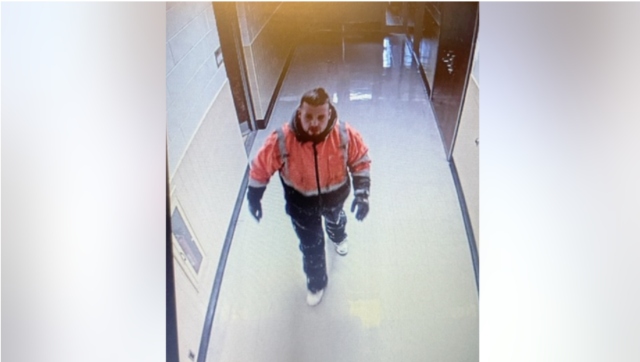Prepper must-haves: How can a get-home bag help you survive?
01/04/2023 / By Zoey Sky

In some survival scenarios, you may have to leave your home and evacuate to get to a safer location, such as when you are facing a natural disaster. In these cases, you will need survival gear in your bug-out bag.
But if you are away from home and need to reunite with your family, your gear should be packed in a sturdy get-home bag. (h/t to TheSurvivalistBlog.net)
What is a get-home bag?
When talking about prepper gear, a get-home bag (GHB) is a smaller, more portable version of a regular bug-out bag (BOB) that you use to make it back home safely.
GHBs usually contain supplies to sustain one person for 48 hours or longer until they can walk back home. These supplies include food, water, clothing, tools, a first aid kit and items for building a shelter.
One of the main reasons you need a GHB is that you might not be at home when SHTF.
Natural disasters or other emergencies can occur without warning and leave you stranded away from home. With a GHB, you have a greater chance of making it back safely.
Get-home bag versus a bug-out bag
You need a GHB if you ever find yourself away from home when SHTF. But how is a GHB different from a bug-out bag?
A BOB contains more supplies than a GHB and is meant to help you live self-sufficiently in the wilderness for an extended period of time.
Meanwhile, GHB is designed to help you make it back home after SHTF. Ideally, a GHB should contain fewer supplies than a BOB and it should be portable so that you can carry it wherever you go. (Related: 20 Wilderness survival tips that might save your life after SHTF.)
When facing a disaster scenario, it’s best not to use a GHB as a substitute for a BOB. They are two different bags meant for two different purposes, so make sure you have both in your prepper supplies.
Preparing your get-home bag
The supplies included in your get-home bag will vary depending on your specific needs and situation.
For future reference, most GHBs contain the usual survival items like food, water, clothing, tools, a first aid kit and shelter materials. Note that you should pack light since you don’t want to be out of breath if you have to walk all the way home.
Since a get-home bag is designed to supply you with basic equipment and supplies to make it home after SHTF, you must be selective about what you pack. Focus on things that are light, low-profile and easy to use.
While you shouldn’t sacrifice capability, you also don’t have to pack for a situation full of uncertainty. If you are familiar with your area and the potential survival scenarios you might face, you will generally know where you are and where you are going.
When things go south, you should try to get there as fast and as safely as possible.
Your GHB loadout should reflect that. Keep up your speed as much as possible and use your bag to supply all of your survival needs in a pinch.
Food
When packing food, you want something that will provide you with enough energy and sustenance for your journey on foot. Pack high-calorie foods that won’t spoil easily or take up too much space, like beef jerky, granola bars or nuts.
You can also pack the following food items in your GHB:
- Candy bars
- Dried fruit or fruit leather
- Energy bars
- Seeds and nuts (Almonds, cashews, peanuts, pistachios, walnuts, etc.)
- Sport energy gels
- Trail mix (Nuts, seeds, dried fruit, and chocolates)
Water
Clean drinking water is essential to your survival when SHTF so you need a couple of bottles of water in your GHB.
If possible, prep purified or distilled water so you don’t get sick from contaminated water sources.
Clothing
Pack a spare change of clothes that are seasonally appropriate. Your clothing will help protect you from the elements and help you blend in with your surroundings.
Choose neutral colors. Avoid clothing in bright colors and patterns that will make you stand out in a crowd.
Tools
Make sure you also have some basic tools that will be useful on your journey home. You should have items like a sturdy knife, a multi-tool, a flashlight with extra batteries and a headlamp in your GHB.
Compass/Maps
If you get lost when SHTF, a compass and map of the area can help you find your way back home. Include a regional map, city map and atlas in your GHB.
First aid kit
You need a basic first aid kit in your get-home bag so you have medical supplies for common injuries like cuts, scrapes and blisters.
Make sure your kit includes antibiotic ointment, bandages, pain relief medication and anything else you might need to treat minor injuries.
Shelter
If you have to spend the night outdoors while making your way home, you’ll need shelter from the elements. Pack a tarp, tent or sleeping bag so you can build a shelter and stay warm and dry.
Your GHB is a smaller and lighter variation of a bug-out bag that can help you stay safe and survive the journey back home if you are elsewhere when disaster strikes.
Prepare your get-home bag before SHTF and keep it in your car or office desk to increase your chances of making it home safely when disaster strikes. Pack your GHB with care and include items that will address the specific needs of your situation.
Watch the video below if you need more reasons to carry a get-home bag.
This video is from the Survival 101 channel on Brighteon.com.
More related stories:
11 Things you need to add to your get-home bag.
Stockpile storage tips: How to organize your survival supplies.
Prepper must-haves: How to pack a “get me home” bag.
Sources include:
Submit a correction >>
Tagged Under:
bug out, disaster, emergency supplies, Gear, Get Home Bag, GHB, off grid, preparedness, prepping, SHTF, survival, survival gear, survival tools, tips
This article may contain statements that reflect the opinion of the author
RECENT NEWS & ARTICLES
COPYRIGHT © 2017 DISASTER NEWS




















